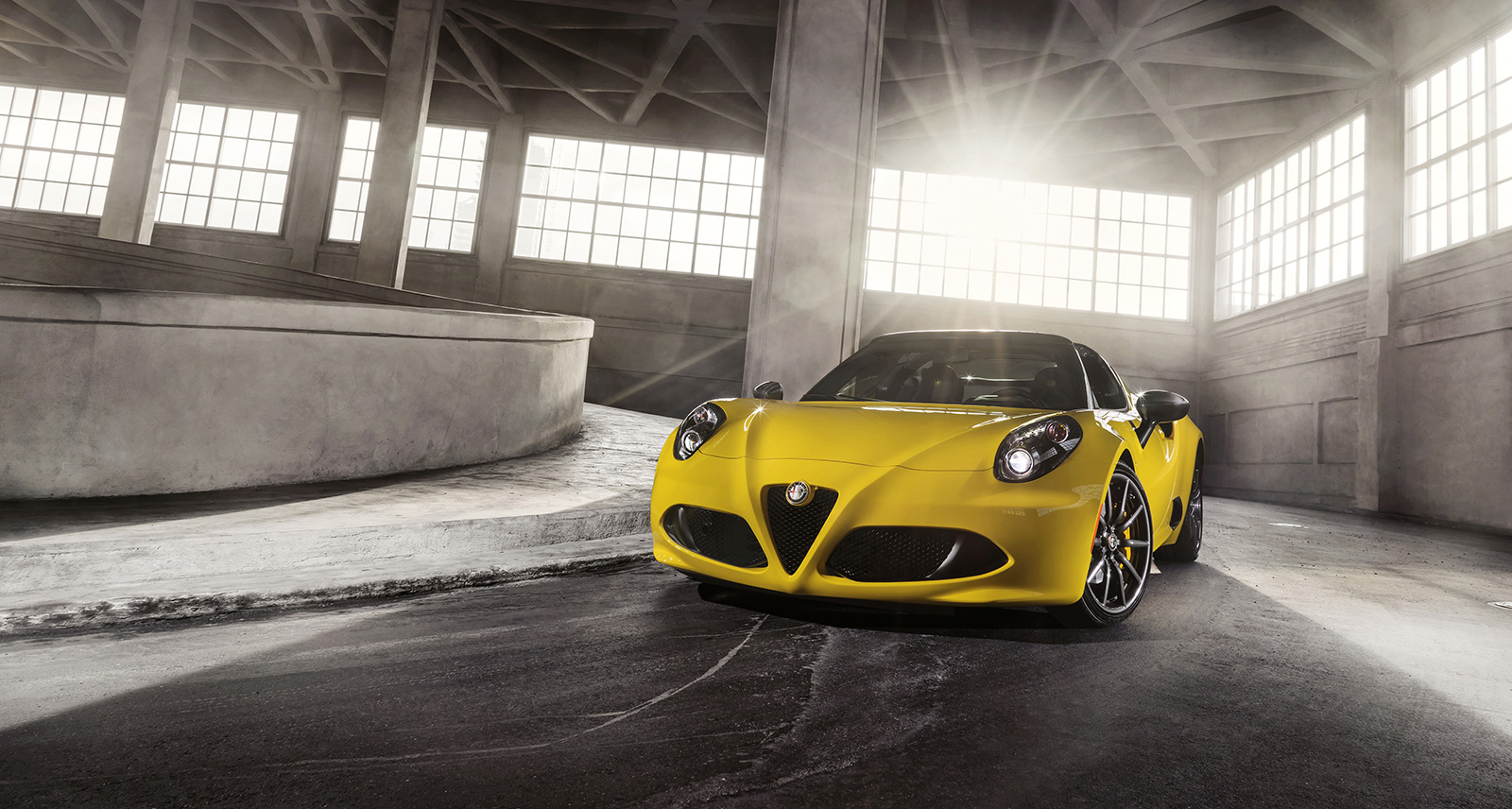Here’s What Makes the Alfa Romeo 4C So Damn Fun to Drive
Colin Chapman, the founder of Lotus Cars, once remarked that if you want to go faster, add lightness. Boy, was he ever right. It’s a maxim that the engineers at Alfa Romeo took to heart when designing their remarkable 4C.
Every aspect of the Italian knockout was designed to keep its weight to an absolute minimum. The result is the lightest mid-engined sports car on the market, pumping out incredible speed and performance without requiring the big engine, big brakes or big tires of its heavier, pricier competitors. Oh, and the fact that it happens to look like a full-blown, quarter-million-dollar exotic? Just the cherry on top.
Here, we take a closer look at a handful of the 4C’s weight-saving, fun-inducing innovations.
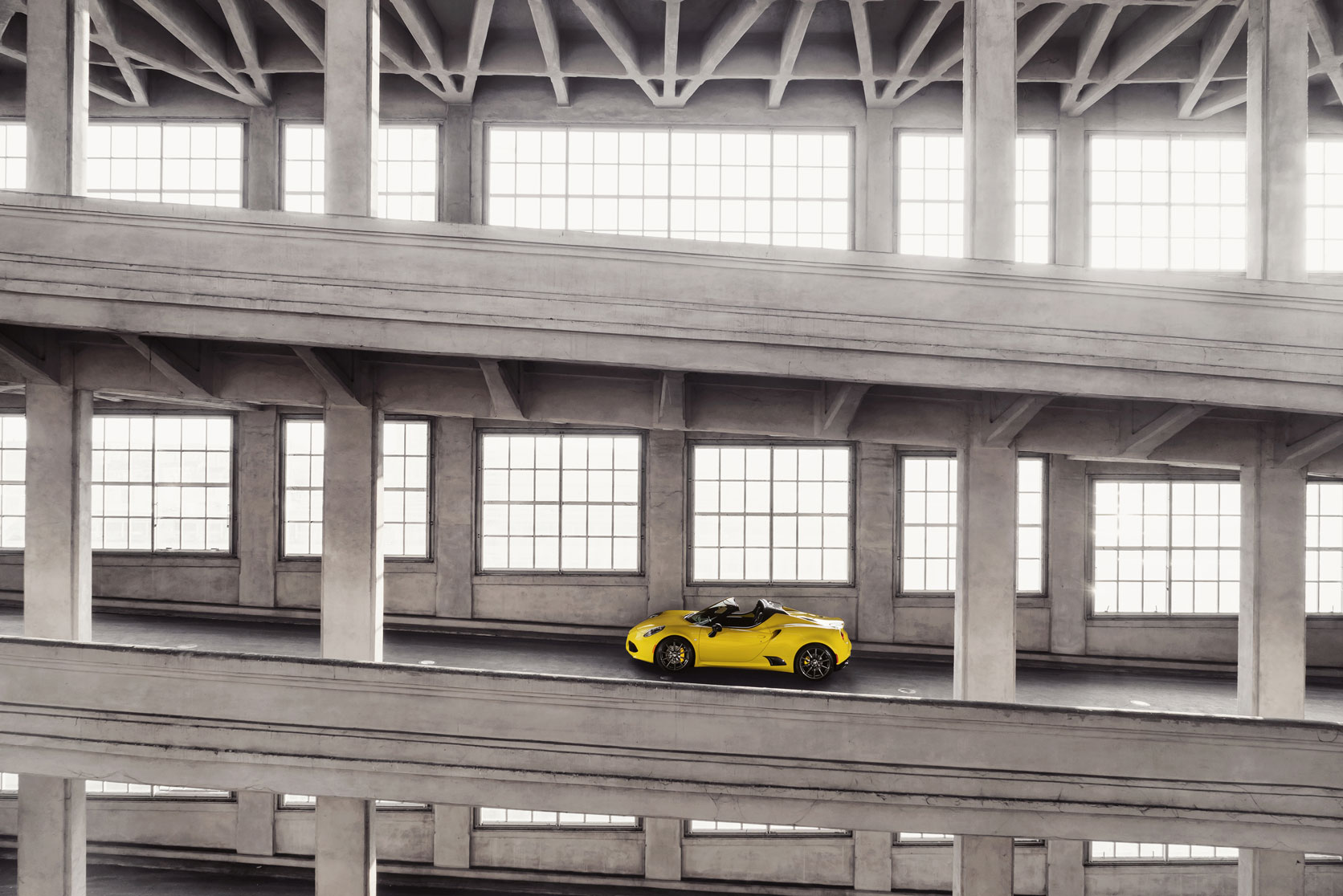
Carbon Fibre Tub
The entire centre portion of the car is made from hand-laid carbon fibre sheets. Cut like a suit pattern, laid out in layers with epoxy and then cured in an autoclave, this is Formula 1 technology for the street. 10 times stronger than steel (by weight) and eight times stronger than aluminum, this ultra-rigid midsection has the engine, front and rear suspensions bolted up to it on aluminum subframes. Next cheapest car that uses this technology? The $200,000 McLaren 540c. It’s also used in the $3 million Bugatti Chiron. Fun fact: Alfa can only make a few thousand a year because of the labour-intensive and time-consuming process, thereby guaranteeing exclusivity.
Manual steering
It might seem odd to get excited about manual steering, considering you probably haven’t had it since your Cavalier in high school. But not only does it save weight, it’s all that’s required in this featherweight car. Aside from feeling a bit heavy at parking lot speeds, there is the undeniable upside of more precise steering without power assistance. Also, it’s infinitely better than the electrically-assisted steering racks now creeping into cars as both a weight- and fuel-saving measure.
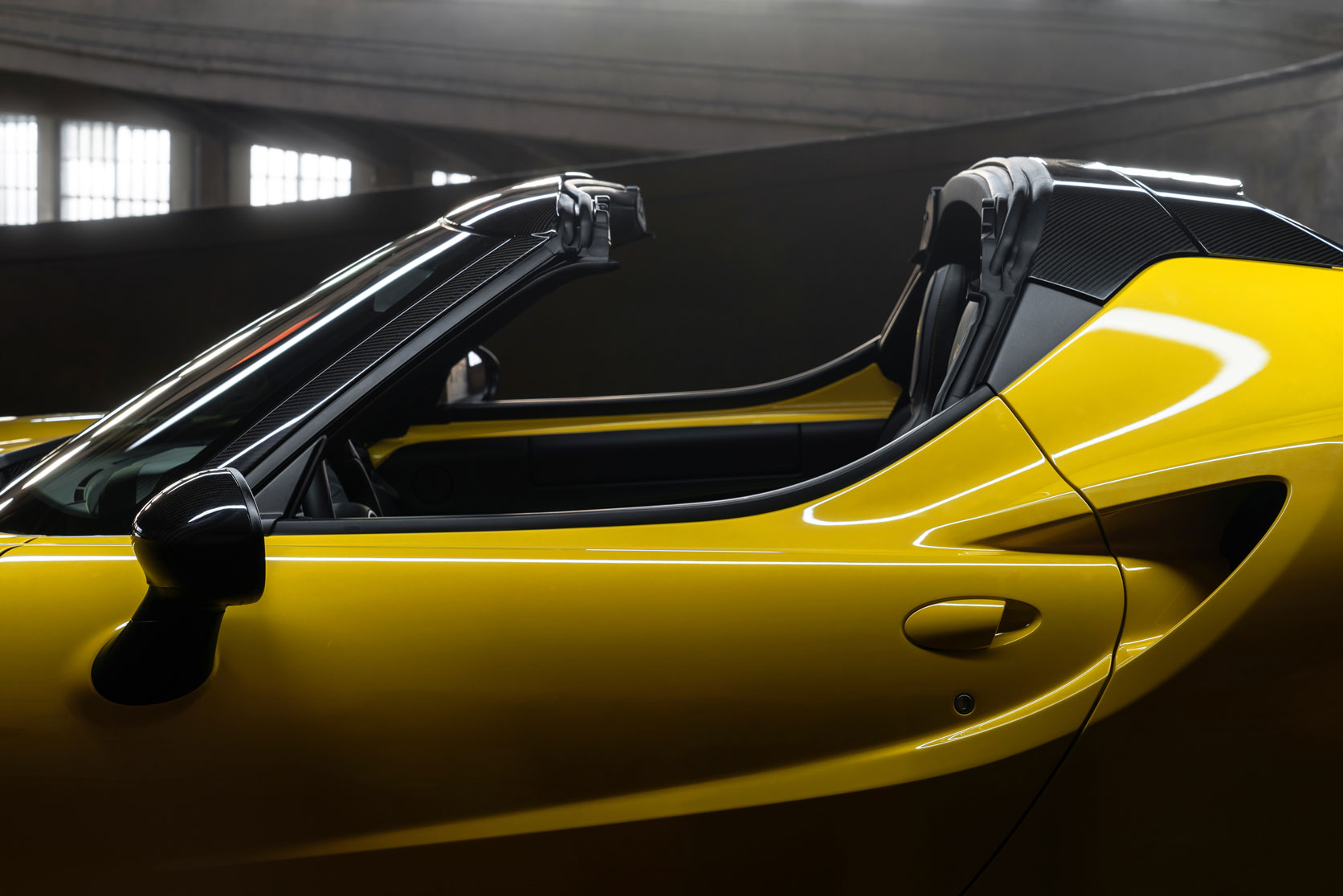
No Muffler
We’re not entirely sure how Alfa is getting away with this, but if you order the sport exhaust, the 4C doesn’t come with a muffler. Not only does this save weight, but it makes it one of the rudest, loudest little buzz bombs on the road. A never-ending cacophony of pops, burbles, farts, rips and roars come tearing out of the end of this sucker. It quiets down just enough on a highway cruise that you can probably convince yourself or your significant other that it’s suitable as a daily driver. You’re probably fooling yourself, but we understand the impulse.
One windshield wiper
When we said they took every aspect into consideration, we meant it. In Europe, the 4C’s passenger seat isn’t even adjustable; why bother with all the added mechanisms and associated weight? Likewise, the windshield wiper. If a single big one can replace two small ones, then that’s the move. As an added benefit, it looks incredibly cool.
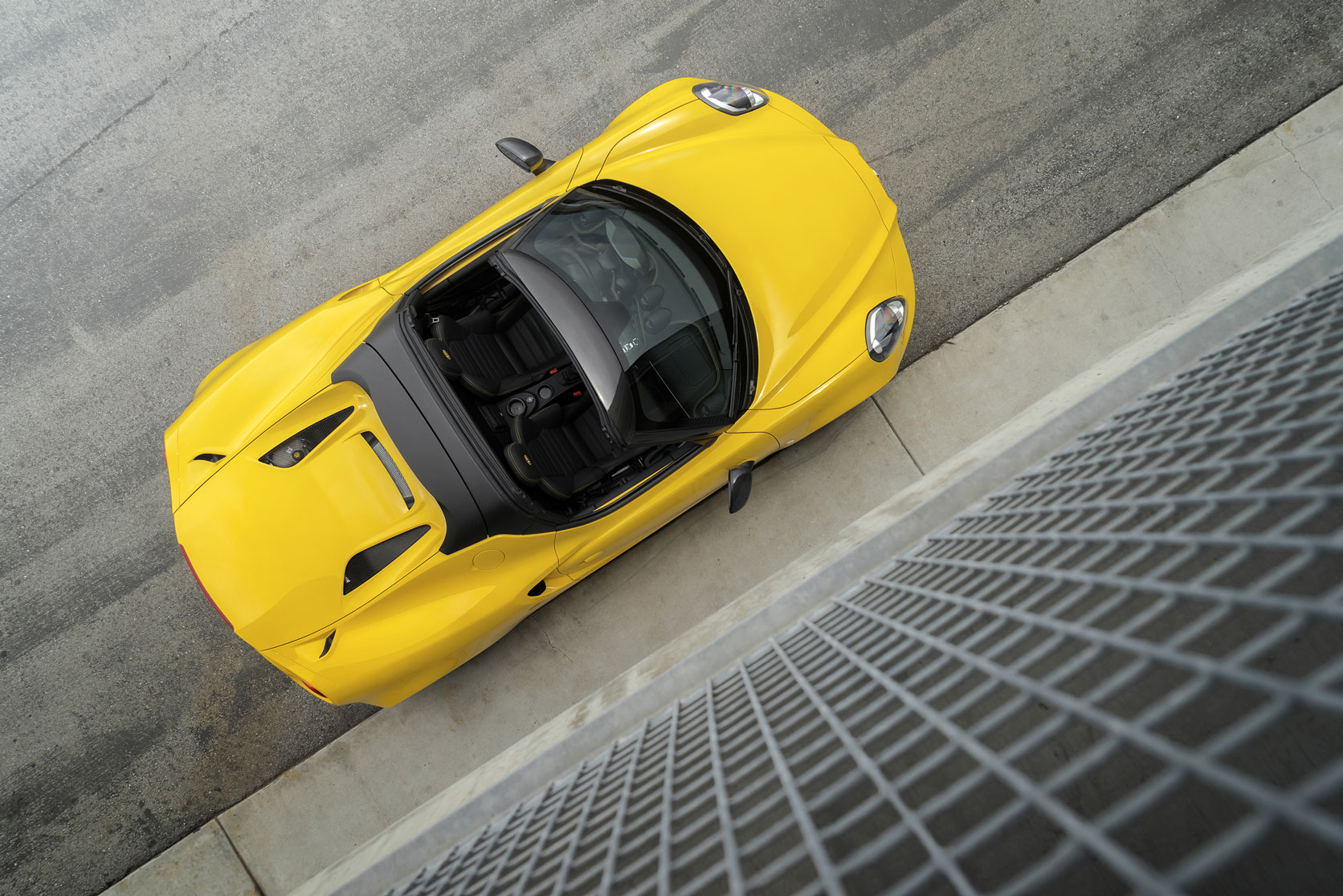
Thin shell carbon buckets
Truth be told, I had to use a small pillow for lumbar support while driving the 4C. That said, I’m 6’5” and don’t really fit. The carbon buckets, however, are impossibly cool with their exposed carbon backs and firm support. Seats like these are an $8,000 option on a Porsche 911, but come standard here. Think about that for a second.
No gas cap
Saved at least 200g right there. There really isn’t sound insulation or carpeting, either, but more the better to gaze on the beauty of the carbon construction.
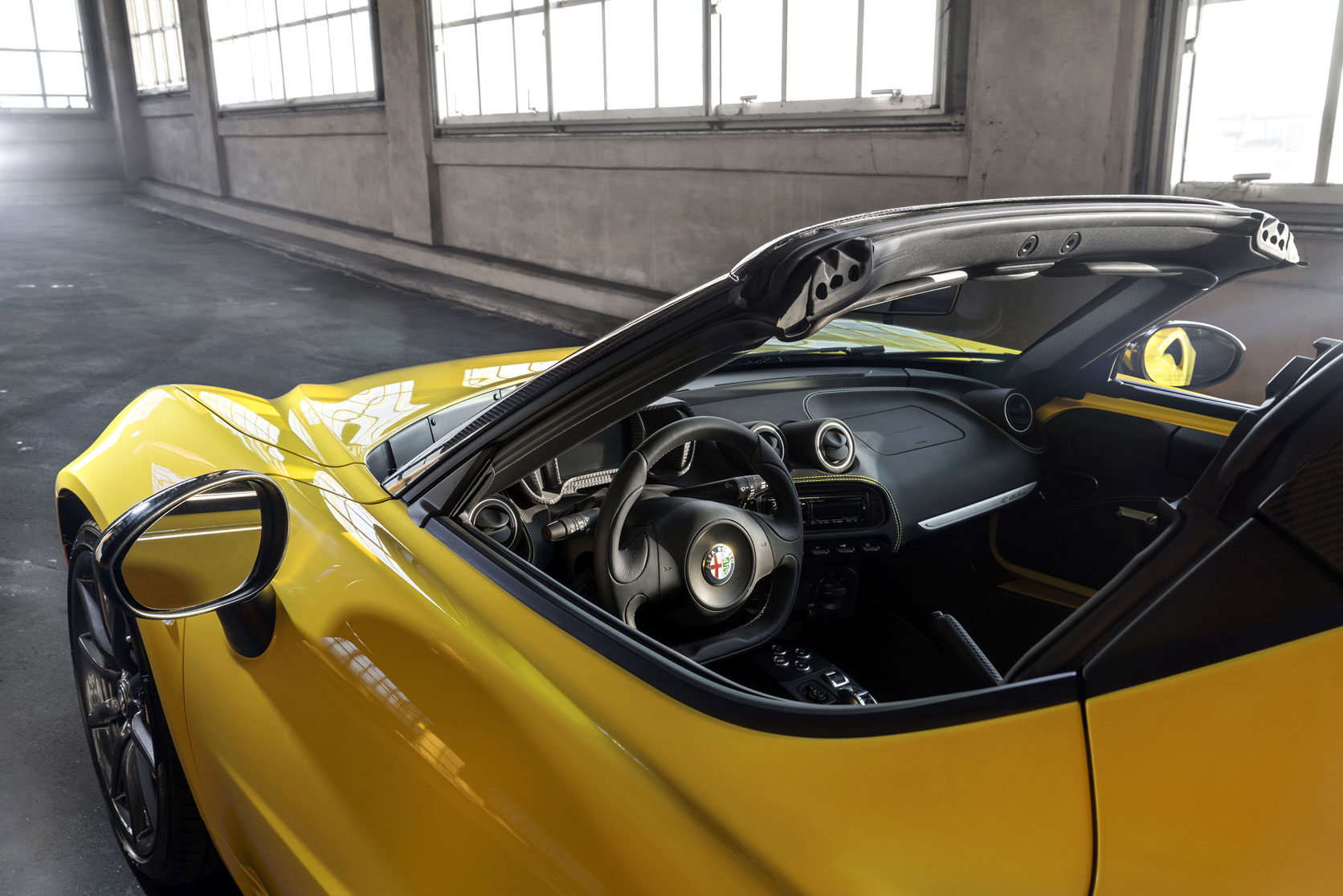
Roll-up fabric roof
This is actually pretty cool. It takes a try or two to get the hang of it, but once you do it’s so impossibly clever. When latched and stretched in place it’s taut and solid. Unlatch it, roll it up and toss it in the trunk when you want to go al fresco. It’s worth mentioning that because this open-roofer is built on a carbon tub, it always feels just as rigid as the hardtop version. No shaking or wobbling on rough pavement. There’s a real feeling of solidity and quality to the car. Impressive.
Plastic body panels
The thing about a carbon tub with aluminum subframes is that none of the body panels are stressed — in other words, they don’t contribute to the structure of the car, just like how the blazer you’re wearing doesn’t make you stronger. They’re moulded out of plastic, which is not only light and impact resistant, but also allows for the 4C’s sensual, impossibly curvy shape. More win-win lightness in action. And while we’re talking body panels, we should mention that there’s no front hood. Unlike the Porsche Boxster with its “frunk,” the 4C’s front end doesn’t even open. Why have the hinges and struts if you don’t need them? Pack light.
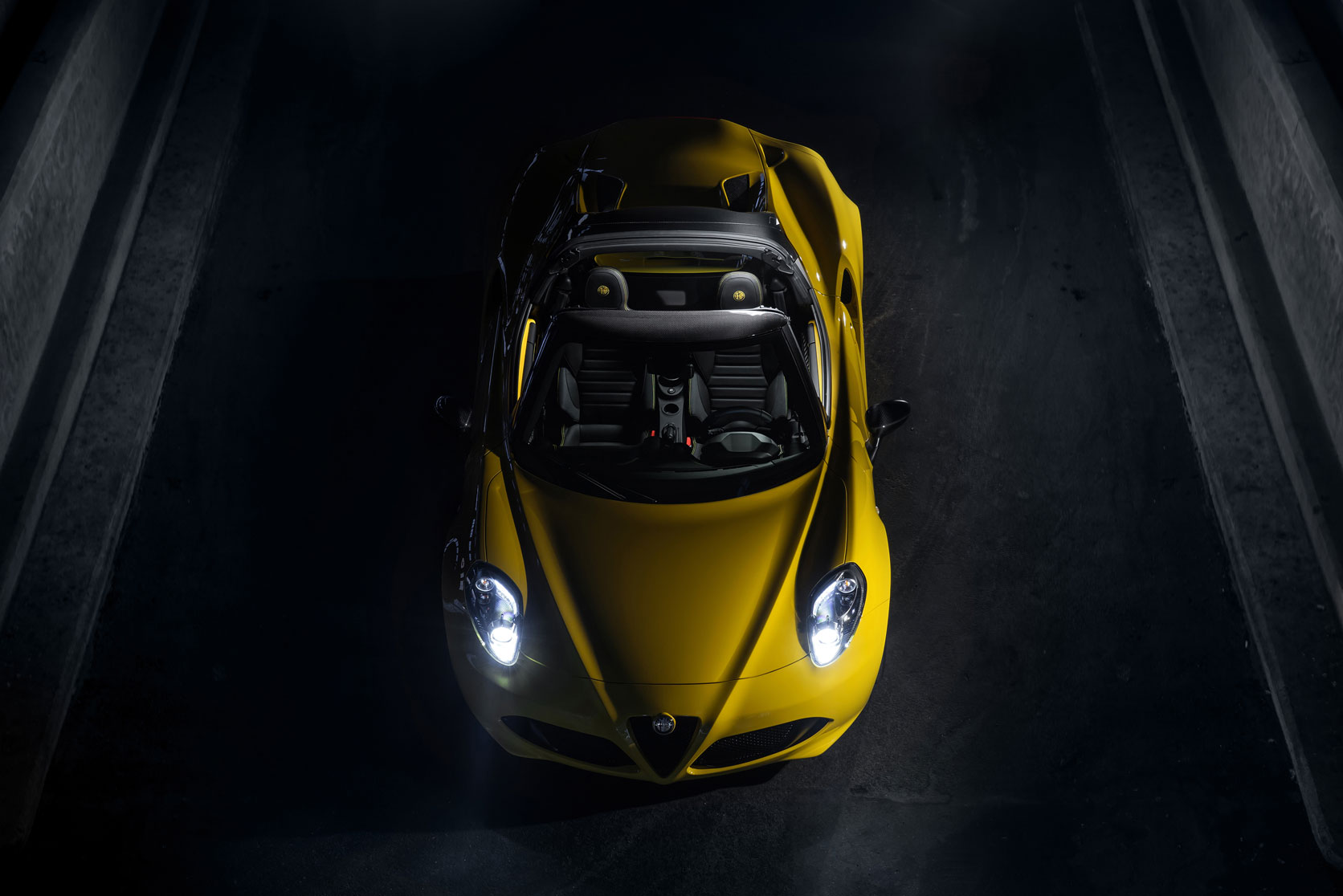
So how does it drive?
All this lightness adds up to one thing: fun! This car is a hooligan. 240 horsepower might not seem like a lot in this day and age, but relative to the 4C’s weight, it’s the same as having nearly 500 horsepower in a run-of-the-mill SUV. Beyond its straight-line speed, too, the car’s quick-shifting, double-clutch, paddle-shifted gearbox gives it oh-so-glorious, go-kart-like handling.
The best way to describe the 4C is a faster, sexier, mid-engined Mini Cooper. Some might see that as a slight, but those are people with no soul and egos too big to concede that a light, fun, four-cylinder car can give the same thrills as a $400,000 V8 Ferrari. Don’t believe me? Try 0-100 km/h in 4 seconds and a 260 km/h top speed! All this for $78,500 ($93,000 as tested with optional wheels, extra carbon trim inside, leather dash and, um, yellow brake callipers).
